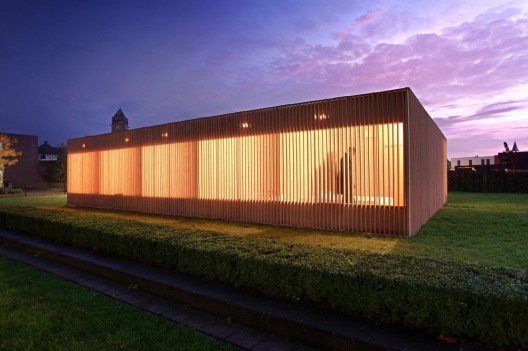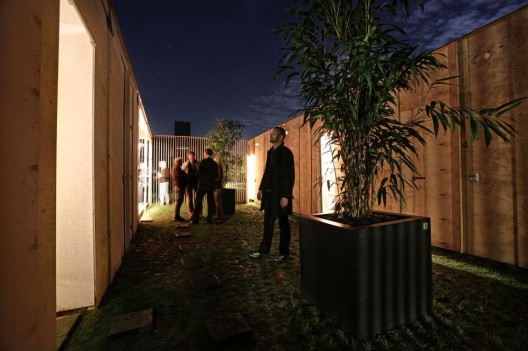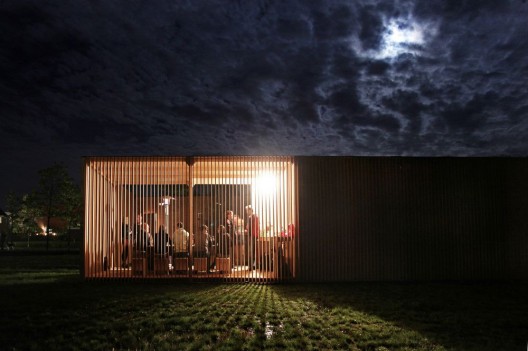Tuesday, November 30, 2010
The City and the Moving Image: Urban Projections
Monday, November 29, 2010
Olympus BioScapes: 2010 Winners

The Olympus BioScapes Digital Imaging Competition honors the world’s most extraordinary microscope images of life science subjects captured through light microscopes, using any magnification, any illumination technique and any brand of equipment. The thousands of images that people have shared with the competition over the years reflect some of the most exciting work going on in research today, work that can help shed light on the living universe and ultimately save lives. We look at BioScapes and these beautiful images as sources of education and inspiration to us and the world. via Olympus BioScapes
Credits for image above:
1st Place – Dr. Igor Siwanowicz
Max Planck Institute for Neurobiology
Munich, Germany
Specimen: Frontal section of Phalangium opilio (Harvestman/Daddy longlegs) eyes
Technique: Confocal

2nd Place – Mr. Thomas Deerinck
University of California, San Diego
San Diego, California, USA
Specimen: Rat Hippocampus
Technique: Multiphoton

3rd Place – Mr. James Nicholson
Coral Culture & Collaborative Research Facility, Fort Johnson Marine Lab
Charleston, South Carolina, USA
Specimen: Solitary coral, Fungia sp
Technique: Reflected illumination/epifluorescence without barrier filter

4th Place – Mr. Wolfgang Bettighofer
Kiel, Germany
Specimen: Licmophora juegensii on red alga
Technique: Differential interference contrast

5th Place – Dr. M.R. Dadpour
Department of Horticultural Sciences, University of Tabriz
Tabriz, Iran
Specimen: Flower primordium of Tribulus sp
Technique: Epi-Illumination, 100 z-stacked images

6th Place – Dr. Jerzy Gubernator
Faculty of Biotechnology, University of Wroclaw
Wroclaw, Poland
Specimen: Spirogyra
Technique: Brightfield

7th Place – Dr. Igor Siwanowicz
Max Planck Institute for Neurobiology
Munich, Germany
Specimen: Eye of a common blue damselfly (Enallagma cyathigerum)
Technique: Confocal, series projection

8th Place – Dr. Jan Michels
Christian Albrecht University of Kiel, Institute of Zoology
Kiel, Germany
Specimen: Adhesive pad of the first leg of a beetle (Clytus sp.)
Technique: Autofluorescence

9th Place – Ms. Yanping Wang
Beijing Planetarium
Beijing, China
Specimen: Seeds of wild flowers
Technique: Brightfield reflected light

10th Place – Mr. Laurie Knight
Tonbridge, Kent, United Kingdom
Specimen: Weevil (poss. Curculio nucum or Curculio glandium)
Technique: Episcopic illumination
All images and text are courtesy of Olympus BioScapes.
Temporary Hotel / IAA Architects
For this temporary hotel, IAA Architects created a shelter where the occupants become a form of entertainment to passersby. Designed in collaboration with artists and Aneta Grzeszykowska Jan Smaga, the hotel is part of a temporary installation and envisioned as a piece of art. With five screened bedrooms, a shared gardens and common facilities, the hotel offers an inexpensive place to lodge and creates a simple aesthetic for the Grenswerk Festival of Arts.
More images and more about the project after the break.
The lightness of the structure allows the guests’ motions to be seen from the exterior. “The guests are part of the spectacle,” explained the architects. “If a guest in the night a light on to read, everyone can see. People who sleep meet during breakfast and then can share experiences. Who knows, it opens up some friends for life. ”
The simple materials create a quiet structure that doesn’t impede on the land, but rather affords view not only of the people within, but the occupants have great views of the surrounding landscape.
As part of the exhibit for the Museum in Enschede, this project, entitled ”Night at the Museum Avenue” functions for those occupying the interior space as well as those passing by.
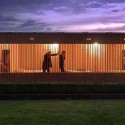
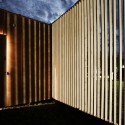
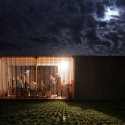
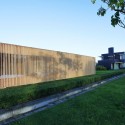
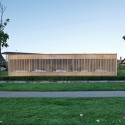
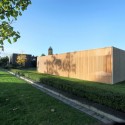
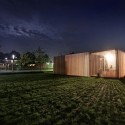
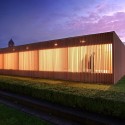
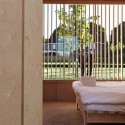
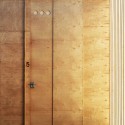
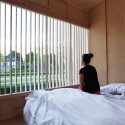
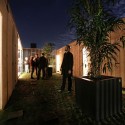
As seen on blog bellostes
Temporary Hotel / IAA Architects originally appeared on ArchDaily, the most visited architecture website on 27 Nov 2010.
send to Twitter | Share on Facebook | What do you think about this?
Tuesday, November 23, 2010
Monday, November 22, 2010
New identity for leading UK lighting institution
RIAS honours Jonathan Speirs with Lifetime Achievement Award
Sunday, November 21, 2010
Outsider Architecture

Guerrilla Lighting Southwark Whites Grounds, image (c) Nadine Stewart.
Street artists have a tenuous relationship with the media. While it’s essential that they maintain a mysterious image as outsider artists, it’s also seemingly essential that they get their names in the news. British artist Banksy has been toeing that line for years, sometimes landing more on the side of a global brand (friend-to-the-Jolie-Pitts) than masked Robin Hood of social commentary.
Architects aren’t quite so conflicted over the notion of mainstream success, but the recession was a catalyst for a similarly client-less phenomenon in the profession.
A recent piece in the New York Times made the conflicted nature of street art culture clear: The article is an account by a journalist who was lucky enough to travel to a secret ‘gallery‘ featuring the work of more than a hundred well-known artists in an unfinished, never-used subway station at an undisclosed location in New York. (It’s actually the abandoned, in fact never even used, South Fourth Street subway station adjacent to the Broadway G stop in Brooklyn.)

Image (c) the New York Times.

Work by Revok x Ceaze for the Underbelly Project, photo (c) Luna Park.
Similarly self-led design interventions have been popping up more often in the last few years. In an economy where there isn’t always a client to commission a project, there’s a small and vibrant set of designers working off the grid. In other words, there are urban and architectural interventions happening all over your city, secret and sometimes illegal, that are redefining what it means to be a successful designer.


Brooklyn Dumpster Pools (summer ’09), Macro-Sea, Brooklyn, NY.
Call it the next generation of Paper Architects. The era of ‘paper architecture,’ where out-of-work architects create vibrant dialogs out of entirely theoretical, surrealist proposals, was largely stifled by the boom of the 90s. But in the face of sustained economic sluggishness, projects that intervene in the public realm without a client or commission are increasingly popular.

Guerrilla Lighting Southwark The Tanneries (c) Martin Lupton. Guerilla Lighting is an ongoing project led by architects, designers, and artists that describes itself as a “war on bad lighting, guerrilla lighting is a protest against wasteful use of light”
Many architects working on projects without clients or briefs are practicing in cities stricken by problems much larger than a little urban intervention. For example, Detroit and New Orleans are two major points of interest, while Brooklyn and Chicago also have active populations as well.

Hypothetical Development Organization, New Orleans, images (c) The Hypothetical Development Organization. The group takes abandoned buildings around New Orleans and illustrates theoretical futures for them in the form of 3′x5′ “Coming Soon!” signs.


Agent Orange project, Detroit, Michigan – which draws attention to the massive number of abandoned homes in Detroit by painting entire structures tiger orange (the color the city uses to mark the homes for demolition).
Obviously, there is another conversation to be had about whether or not these projects fall on the side of architecture, art, or urban intervention. But we’re mostly interested in seeing what happens when a client isn’t there to provide a brief, rather than categorically excluding certain types of built project due to their content. What do you think?

